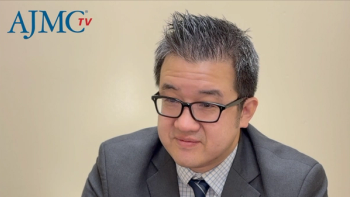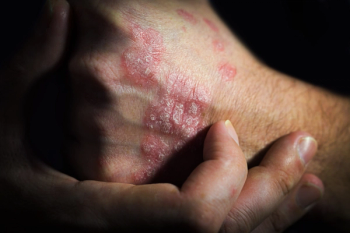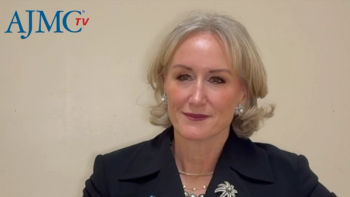
Ruxolitinib Plus Anemia Supportive Care Maintains Efficacy in Myelofibrosis: Pankit Vachhani, MD
A post-hoc analysis of the phase 3b JUMP trial found that ruxolitinib plus anemia supportive care maintained efficacy and reduced transfusion needs in patients with myelofibrosis.
In part 2 of an interview with The American Journal of Managed Care®, Pankit Vachhani, MD, of the University of Alabama at Birmingham, highlights key findings from his
Watch
This transcript was lightly edited; captions were auto-generated.
Transcript
What were the key findings from your post-hoc analysis? Were there any that particularly stood out or surprised you?
We found that 101 patients met the criteria for the study, and almost every one of those, meaning 98 out of 101, received [a] erythropoietin-stimulating agent [ESA] in the form of epoetin or darbepoetin, so most of these had ESA therapy in addition to rux [ruxolitinib].
Of these 101 [patients], 52 had hemoglobin [level] less than 10. Nearly half the patients were intermediate-2, or high-risk patients, and they went on the study about a year to a year and a half from the time of their original diagnosis. What we found was that these patients had a median white [blood cell] count around 15, platelet count around 300, and their spleens were big, about 13 cm below the left costal margin by palpation. They stayed on the ESA or danazol treatment for about 10 months or so.
The time from enrollment to the first dose of ESA or danazol was about 30 to 40 days, 34 days for those who were very anemic, meaning hemoglobin [level] less than 10. A few patients, 10 patients to be precise, [who were] below [a] hemoglobin [level] of 12 were transfusion-dependent at baseline when they [joined the] study. Now, those were the baseline characteristics of those who went on the study.
What we found, to our interest, was that in the first few weeks of going on the study, the mean dose of ruxolitinib dropped a little bit, perhaps in line with what we would have expected. But the good part about it was that patients were able to maintain a dose [of] about 25 mg per day for most study visits.
Now, why is this important? It's important because we consider this daily dose of 25 mg or more, in other words, more than 10 mg twice daily, as an effective dose. We want to see our patients on it because that is the dose that correlates with the good spleen and symptom outcome. This total daily dose of 25 mg or more, even going all the way [to] 48 weeks, was a good thing to see.
In terms of spleen response and symptom response, what we found was that for those who are very anemic, meaning hemoglobin [level] less than 10, or the overall anemia group, meaning anyone with hemoglobin [level] less than 12, they both had very comparable responses for both spleen and symptoms as compared [with] the entire JUMP [trial] patient population. This is another way of saying that the spleen and symptom responses were not compromised; if anything, they were comparable.
Beyond that, in terms of hemoglobin, what we found is, well, even the hemoglobin levels weren't really affected much. In the first few weeks, perhaps the hemoglobin value went down a little bit, but soon enough, after 4 to 8 weeks, the hemoglobin values, on average, started coming up [and trending] up. By the end of 48 weeks, if anything, numerically, then the numbers were just slightly higher than the baseline numbers.
Hemoglobin was not compromised, or anemia wasn't worsened by doing this. The transfusion requirement actually went up initially, but once again, by the end of [the] 48 weeks, the transfusion requirement was below what the patients had started with, meaning less than baseline. With all of that, in fact, there were a few patients who became transfusion-independent from being dependent before going on this study.
Newsletter
Stay ahead of policy, cost, and value—subscribe to AJMC for expert insights at the intersection of clinical care and health economics.












































